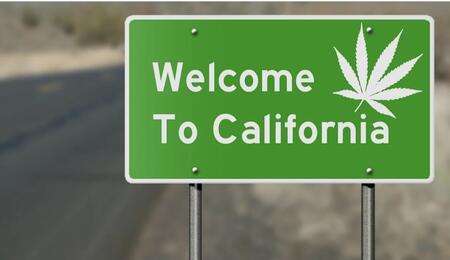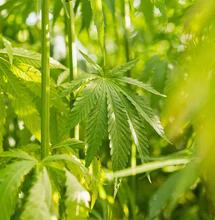Illegal Grows are killing Californian Forests

The thriving illegal cannabis industry in California is not only bad news for the legal market. It also has severe repercussions for the environment and human health.
It's estimated that California's national forests, four of which ring the Los Angeles basin, are home to 80% to 85% of the country's illegal marijuana grows on public land. Grows that are putting millions of people at risk.
In just the past two years, illegal weed farms in California have stolen millions of gallons of water, started a 125,000-acre wildfire in Big Sur and added at least one species to the endangered list.
Last year's 125,000-acre Fire was started by a weed farm in the Los Padres National Forest. It raged destruction on an iconic international landscape — Big Sur and killed 11 endangered condors.
Thirteen wildfires in the California area in the past 12 years can be attributed to growing sites. Fires associated with illegal grows burned at least 275,000 acres across California. The Forest Service estimates that the actual toll is far higher, as the origins of wildfires can be difficult to investigate and confirm.
The biggest threats are pesticides and rodenticides used to poison animals that threaten the crops or campsites. Research has proved that the deadly, illegal chemicals work up the food chain as animals feed on one another.
Concern also exists about the risks of people ingesting the substances — whether in the marijuana they consume or runoff into the main water supply. National forests provide 50% of California water via snowmelt and other routes. The site in question here is part of a watershed that contributes directly to the water supply of a city of 36,000, San Juan Capistrano.
Losing a few sites a year to the Forest Service's bust is just the cost of doing business. Typically run by drug-trafficking cartels, an average farm may have 2,000 plants with a street value of millions. While some grow sites may be relatively accessible, just a mile off the main highway, others can take officers days to reach. Growers are typically armed, and they often have a tactical advantage when law enforcement comes in to break up their operations.
The law enforcement division of the Forest Services has arrested more than 21,000 people for growing cannabis on Californian national forest land since 2000. More than 200 sites are busted annually on public lands, but cleanups are costly.
The Cleveland National Forest site team removed almost 1.5 tons of waste in a single day this October. This included over a mile of irrigation piping, 1,110 pounds of fertilizer, and numerous bottles of banned pesticide. More than 40 sites like this have been cleaned up in California alone this year at an average cost of $40,000 per site, and that is before you factor in hazardous material disposal.
Hundreds of sites a year spread across California's 20 million acres of the national forest alone — the Forest Service doesn't have enough resources to tackle them all. In reality, 20.2 to 23.2 million [dollars] is needed for five to eight years to address the topic in California alone fully. Currently, only 10 to 12% of what is genuinely required annually is put in.
The technology to detect sites has improved, but the agency only detects about half of the sites on its land in a given year. And of the sites, the agency detects, about a quarter can keep operating unchecked because there aren't the resources to bust them before the trafficker's harvest. The agency identifies dozens of grow sites annually that it cannot get to before harvest.
The agency could eliminate marijuana grows within the next eight years with the proper resources; however, they are simply playing "whack-a-mole" until that day arrives.











